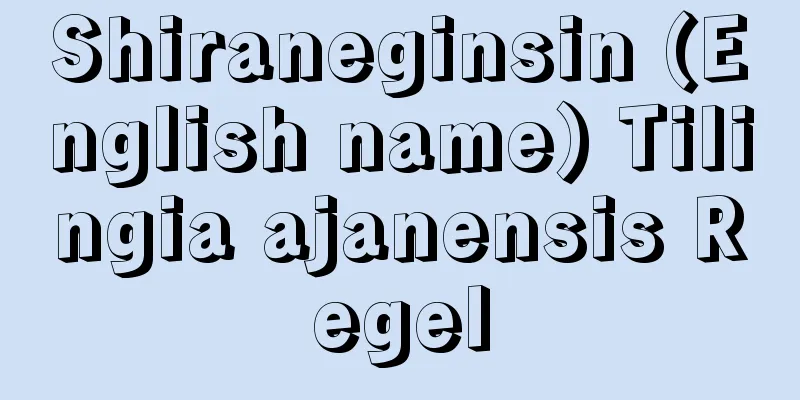Amakasu Incident

|
On September 16, 1923 (Taisho 12), the military police murdered anarchist Osugi Sakae and others. After the Great Kanto Earthquake, the military and police took advantage of the chaos to murder socialists, Koreans, and Chinese. Captain Amakasu Masahiko, commander of the Kojimachi detachment of the Tokyo Military Police, and Sergeant Major Mori Keijiro, attached to the Tokyo Military Police Headquarters, suspected that the anarchists might commit acts of violence, so they arrested Osugi Sakae, his wife Ito Noe, and their nephew Tachibana Munekazu, strangled them at the Military Police Headquarters or the Tokyo Military Police Headquarters, and threw their bodies into an old well. When Osugi went missing, his friend Yasunari Jiro and others began a search, and on September 20, the Jiji Shimpo and Yomiuri Shimbun also reported the murder in special editions, so the military could not hide it, and due to conflicts between the military and the police, Amakasu was sent to a military court martial on the same day, Fukuda Masataro was replaced as martial law commander, Koizumi Rokuichi, military police commander, and Koyama Kaizo, head of the Tokyo Military Police, were suspended, and the details of the incident were announced on the 24th. On December 4, the military court martial sentenced Amakasu to 10 years in prison, Mori to three years, and acquitted three of his subordinates. However, Amakasu was released in October 1926 and traveled to France at the expense of the army. There is a prevailing theory that Amakasu and his men committed the crime on the orders of the military (some say that the perpetrators were officers of the 3rd Infantry Regiment). During Osugi's funeral on December 26, 1923, his remains were stolen by Iwata Tomio and others from the right-wing group Taikakai. In retaliation, anarchist Furuta Daijiro and others shot and killed General Fukuda Masataro on September 1, 1924. Osugi's death dealt a major blow to the anarchist movement. [Yoshiaki Yoshimi] "Captain Amakasu" by Fusako Tsunoda (Chukou Bunko) [Reference] |Source: Shogakukan Encyclopedia Nipponica About Encyclopedia Nipponica Information | Legend |
|
1923年(大正12)9月16日、憲兵が無政府主義者大杉栄(おおすぎさかえ)らを殺害した事件。関東大震災が起こると、軍隊や警察は混乱に乗じて社会主義者や朝鮮人、中国人を殺害した。東京憲兵隊麹町(こうじまち)分隊長甘粕正彦(まさひこ)大尉、東京憲兵隊本部付森慶次郎曹長は、無政府主義者が不逞(ふてい)行為を働くおそれがあるとして、大杉栄、伊藤野枝(いとうのえ)夫妻と甥(おい)の橘宗一(たちばなむねかず)を連行し、憲兵司令部ないし東京憲兵隊本部で絞殺し、遺体を古井戸に投げ込んだ。大杉が行方不明になると、友人安成二郎(やすなりじろう)らが探索を始め、9月20日の『時事新報』『読売新聞』も号外で大杉殺害を報じたので、軍も隠しきれず、また軍と警察の対立もあって、同日付けで甘粕を軍法会議に送致し、福田雅太郎(まさたろう)戒厳司令官を更迭、小泉六一憲兵司令官、小山介蔵東京憲兵隊長を停職処分とし、24日に事件の概要を発表した。軍法会議は12月4日、甘粕に懲役10年、森に同3年、部下3名に無罪の判決を下した。しかし、甘粕は1926年10月に釈放され、陸軍の費用で渡仏した。甘粕らの犯行は軍中央の命令によるとの説が有力である(一部に、犯行の下手人は歩兵第三連隊の将校だとする説もある)。1923年12月26日の大杉の葬儀の際、遺骨が右翼団体大化会の岩田富美夫らに奪われた。その報復のため無政府主義者古田大次郎(ふるただいじろう)らは翌1924年9月1日、福田雅太郎大将狙撃(そげき)事件を起こした。大杉の死によりアナキズム運動は大打撃を受けることになった。 [吉見義明] 『角田房子著『甘粕大尉』(中公文庫)』 [参照項目] |出典 小学館 日本大百科全書(ニッポニカ)日本大百科全書(ニッポニカ)について 情報 | 凡例 |
>>: Amakashi Hill - Amakashi Hill
Recommend
Lettre du voyant (English spelling)
...The emergence of Rimbaud, who would later be c...
Homogenization - Kintsuka
…The other is to convert two or more types of pow...
Russkaya Pravda (English spelling)
There are two known names for Russian legal codes....
Cut-off low pressure - Cut-off low pressure
⇒Cold low pressure Source: About Shogakukan Digita...
Warner, S.
…American film company. The four Warner brothers,...
Tamba clan
A physician of the Imperial Court since the Heian...
Allosaurus - Allosaurus (English spelling)
It is a two-legged, aggressive carnivorous dinosa...
Multiple personality
…Personality is essentially a unity, but when tha...
Principle of private autonomy
The principle of regulating each person's leg...
Voucher-style bookkeeping
Vouchers were introduced to Japan in the early Mei...
School - Gakkou
An organization that carries out educational acti...
Yasugawa River
A river that flows through the southeastern part ...
Light alloys
Alloys of lightweight metals such as aluminum, mag...
Germigny‐des‐Prés (English spelling)
A small village in the Loarre department in centra...
The complete text of the Three Dynasties of the Qin, Han, Three Kingdoms and Six Dynasties of Ancient Times (English)
A complete collection of Chinese writings from anc...









